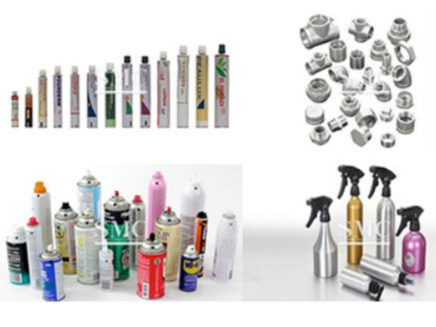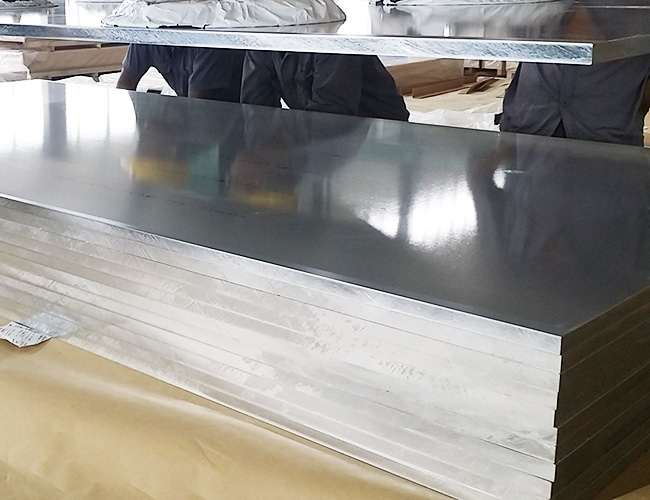
Packaging is one of the three major application fields of aluminum. Aluminum packaging has become the best choice of efficient packaging materials in dealing with plastic waste pollution, reducing resource consumption, ensuring food safety, reducing carbon emissions and some other environmental aspects.
Aluminum, as a packaging material, generally uses aluminum plates, aluminum blocks, aluminum foils, metalized film, aluminum discs, aluminum sheets, aluminum coils, aluminum strips etc.
Aluminum plate is usually used as can making material or cover making material.
Aluminum blocks are used to make cans for extrusion forming and thin reduction and deep drawing forming.
Aluminum foil is generally used for moisture proof inner packaging or composite materials and soft packaging.
There are many forms of raw materials according to the specific applications.
The first packaging use of aluminum, closures on glass bottles, dates to the early 1900’s. This was a successful application primarily because the closure could be made to hold tightly to the somewhat irregular glass threads. Aluminum foil was adopted for packaging shortly after its initial production in 1913.
Candy-bar and chewing gum wraps took advantage of many of the desirable properties of aluminum foil. Impact-extruded collapsible tubes of aluminum were introduced in the United States in 1921. In the late 1950’s, there was a trend toward adoption of aluminum for a broad range of rigid containers. The fabricating characteristics of aluminum permitted production of such containers by impacting, drawing, and adhesive bonding, as well as by spiral winding of foil laminates.
The first packaging use of aluminum, closures on glass bottles, dates to the early 1900’s. This was a successful application primarily because the closure could be made to hold tightly to the somewhat irregular glass threads. Aluminum foil was adopted for packaging shortly after its initial production in 1913.
Candy-bar and chewing gum wraps took advantage of many of the desirable properties of aluminum foil. Impact-extruded collapsible tubes of aluminum were introduced in the United States in 1921. In the late 1950’s, there was a trend toward adoption of aluminum for a broad range of rigid containers. The fabricating characteristics of aluminum permitted production of such containers by impacting, drawing, and adhesive bonding, as well as by spiral winding of foil laminates.
Aluminum for packaging is preponderantly in the form of sheet or foil. Commercially pure aluminum is mainly employed, although non-heat-treatable alloys of the aluminum-magnesium and aluminum-manganese types are also used for higher strength. With both commercial-purity aluminum and alloys, broad ranges in mechanical properties are available through varying degrees of work hardening.
The uses of aluminum in packaging are identified by the industry in four categories:
Flexible wraps and laminates, incorporating foil
Rigid containers, made from sheet, foil laminates, or drawn heavy-gage foil, or impact-extruded from slugs
Closures for bottles and jars, made from sheet or foil
Collapsible tubes, fabricated from slugs by impact extrusion.
Flexible Packaging
In the glossary of packaging terms, flexible packaging is defined as involving the use of flexible materials such as foil, films, paper, and sheet, to form the container. Aluminum foil has become firmly established as one of the major flexible packaging materials. About 85% of all aluminum foil produced is used in some form of packaging. The three major packaging applications are household foil, 35%; laminated foil, 30%; and formed containers, 28.5%.
Aluminum foil is sheet less than 0.0060 in. (0.15 mm) thick. It can be rolled commercially as thin as about 0.00017 in. (0.005 mm). An important characteristic of aluminum foil is its high covering area per unit of weight.
Aluminum foil is outstanding in its low permeability to water vapor and gases. Extremely small pinholes are unavoidable in thickness less than 0.001 in. (0.025 mm). Foil is tasteless, odorless, nontoxic, and hygienic. A special advantage of annealed foil is that it is substantially sterile because of the temperature (over 340°C or 650°F) of annealing. Foil is greaseproof and nonabsorptive to liquids, and hence is especially suited for packaging medicinal oils, ointments, grease-base cosmetics, and similar products. Foil remains dimensionally stable during exposure to oils and greases.
Foil is an effective barrier to light and is used extensively to package photographic materials and other light-sensitive products. Ultraviolet radiation accelerates the development of rancidity in certain foods; foil is a good barrier to this radiation, retarding loss in flavor and appearance, and inhibiting development of rancidity and staleness.
Because it is an efficient reflector and low emitter of radiant heat, aluminum foil is employed for packaging where the thermal insulating properties imparted by these characteristics are advantageous. Despite these insulating effects, the good thermal conductivity makes it possible to chill or heat aluminum packages more rapidly than those with nonmetallic covering.
Alloys used for foil in packaging applications include 1100 (99.0 to 99.3 Al), 1145 (99.45 to 99.60 Al), 3003 (Al-1.25 Mn), and 5052 (Al-2.5 Mg-0.25 Cr). Annealed or soft foil is identified as O-temper. Annealing is accomplished by heating the metal to above 340°C (650°F). This softens the foil, removes traces of lubricants left from rolling, and effectively sterilizes it.
For many years, all the aluminum foil marketed commercially was in either the annealed or the full-hard H19 temper. Foil gages above 0.002 in. (0.05 mm) are also available in the intermediate, partially annealed tempers H25 and H27. Lighter gages in intermediate tempers are available





Related Comments